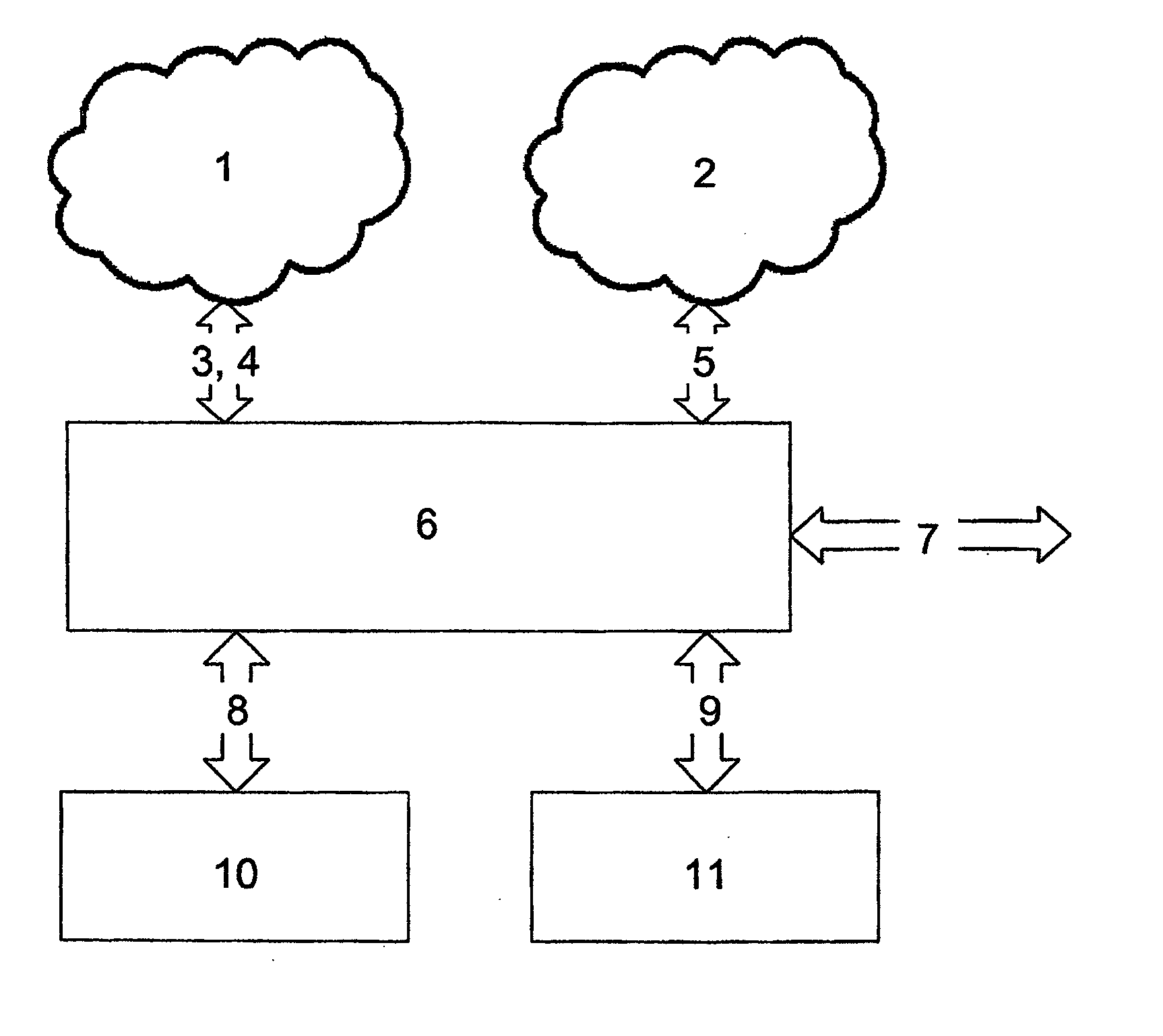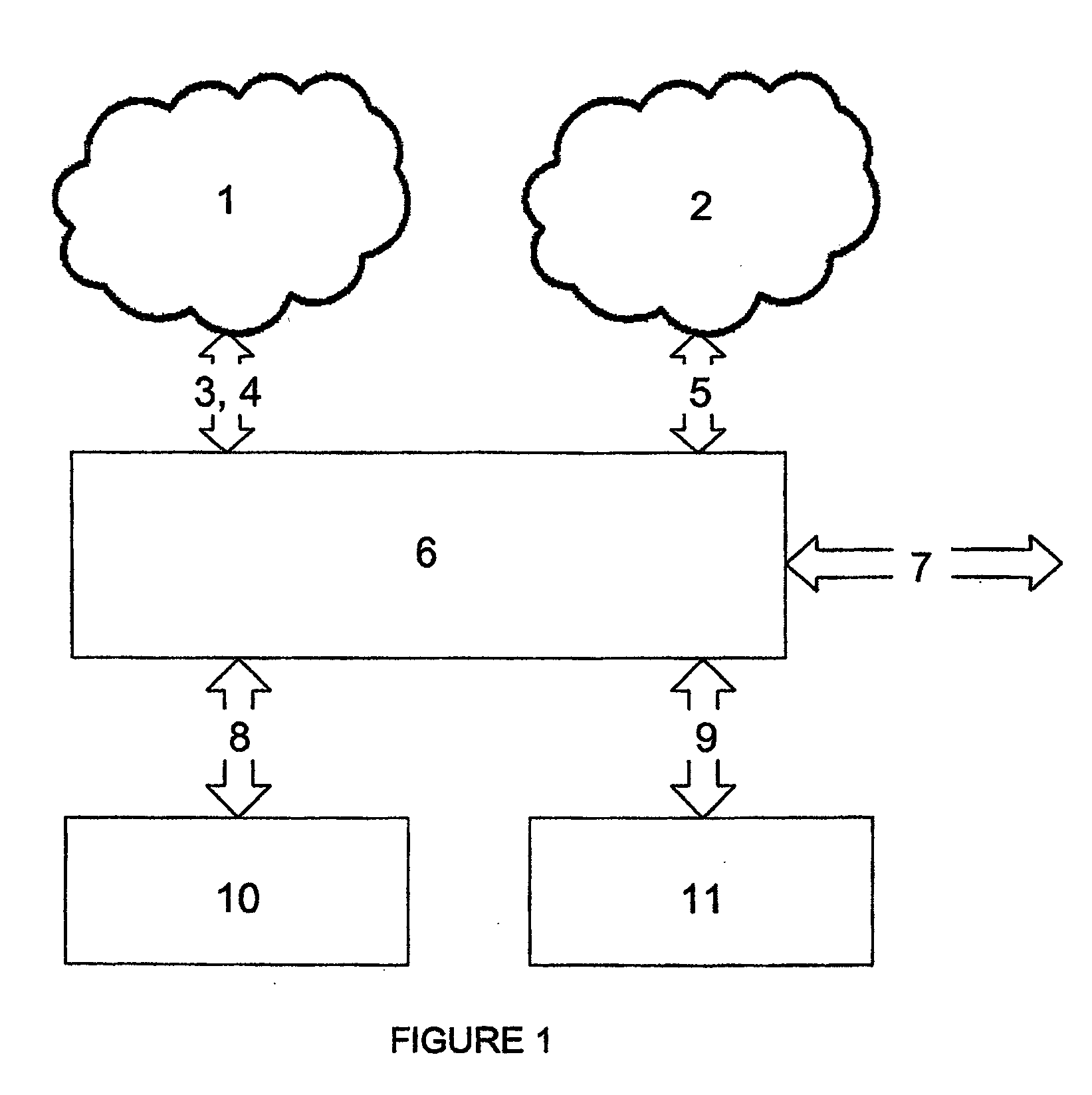System to deliver internet media streams, data & telecommunications
a technology of internet media and system, applied in the field of system to deliver internet media streams, data & telecommunications, to achieve the effect of maximising the quality of service and efficiency of spectrum utilisation
- Summary
- Abstract
- Description
- Claims
- Application Information
AI Technical Summary
Benefits of technology
Problems solved by technology
Method used
Image
Examples
Embodiment Construction
[0118] System
[0119] As shown in FIG. 1, access to the nodes for the Internet (1) and external telecommunications networks (2) are concentrated into one or more gateways (6). Internet services include Internet media streams (3) and Internet data of all types (4). Telecommunications (5) includes telephony, facsimile, short message service (SMS), and generalized packet radio service (GPRS). The gateways serve local service areas (10) using local links (8), and remote areas (11) using remote area links (9). Gateways may be linked using broadband trunks (7) to share resources and provide redundancy in the event of external link or node failure.
[0120] Gateway
[0121] As shown in FIG. 2, the gateways include multiple servers (16) and (17) to access Internet media streams and Internet data respectively. Gateways include internal loopback means (14) to enable traffic to originate and be received within the system, without having to exit the system. Gateways may include additional interfacin...
PUM
 Login to View More
Login to View More Abstract
Description
Claims
Application Information
 Login to View More
Login to View More - R&D
- Intellectual Property
- Life Sciences
- Materials
- Tech Scout
- Unparalleled Data Quality
- Higher Quality Content
- 60% Fewer Hallucinations
Browse by: Latest US Patents, China's latest patents, Technical Efficacy Thesaurus, Application Domain, Technology Topic, Popular Technical Reports.
© 2025 PatSnap. All rights reserved.Legal|Privacy policy|Modern Slavery Act Transparency Statement|Sitemap|About US| Contact US: help@patsnap.com



